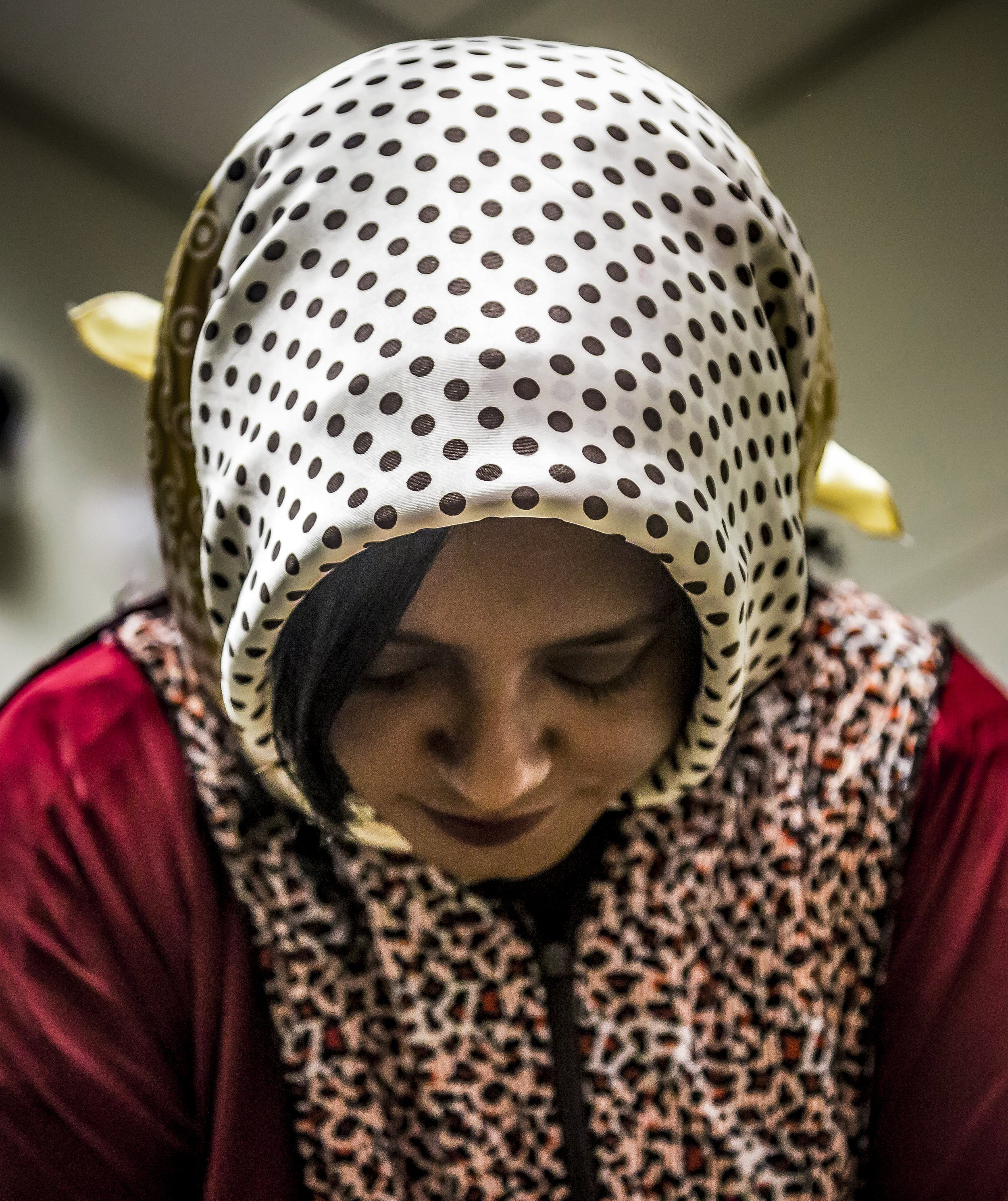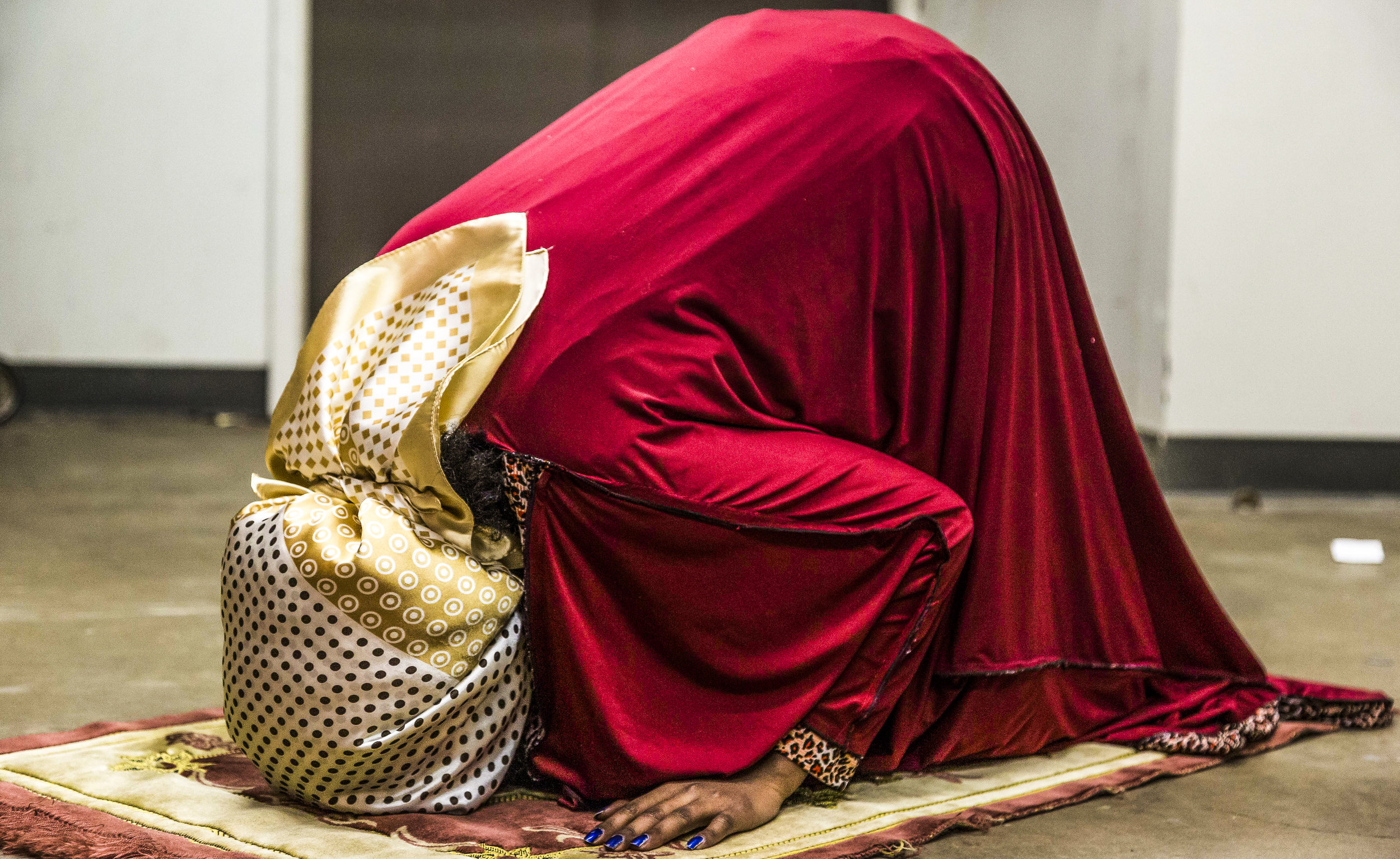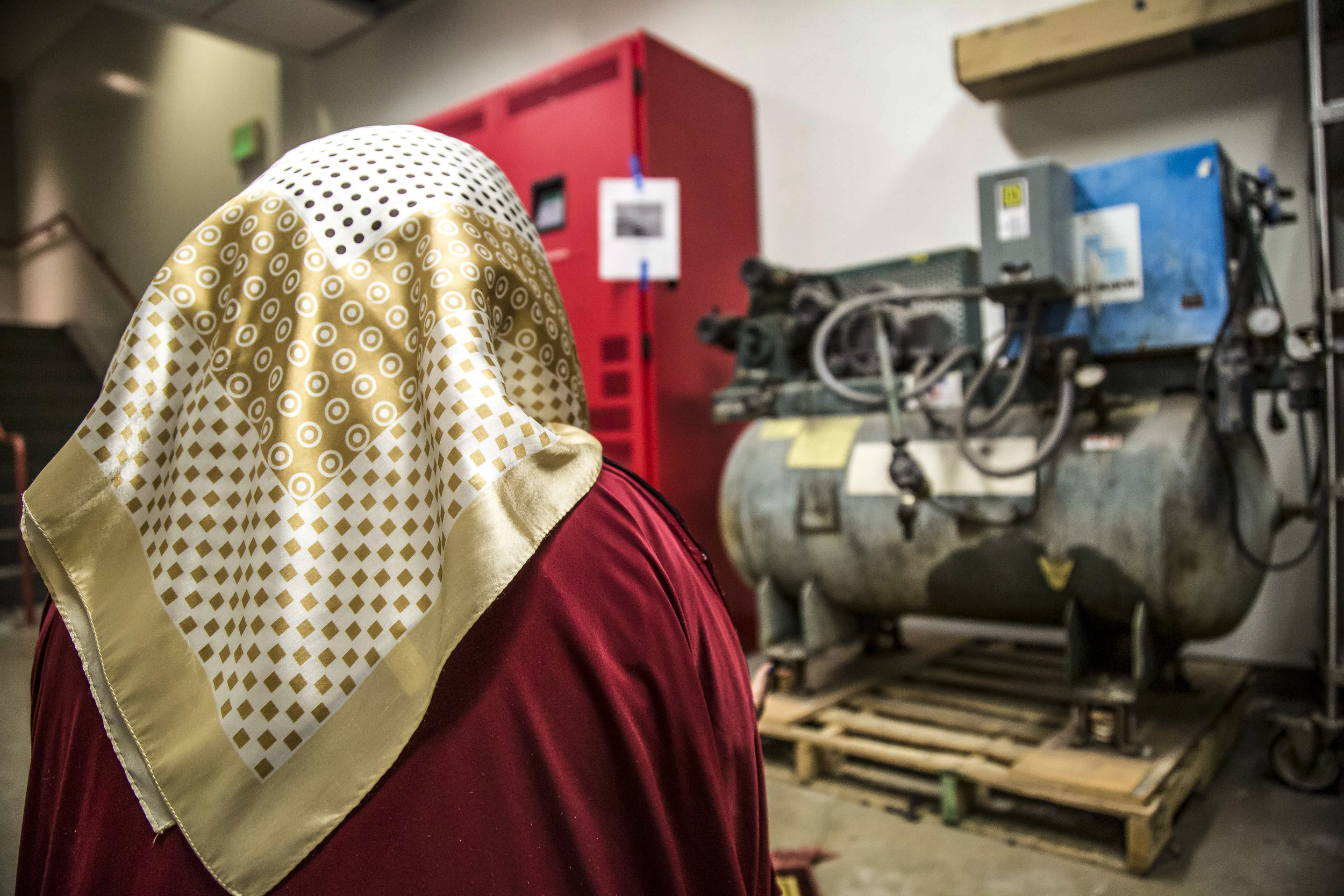A Muslim Prayer Space On-Campus Shares Storage with the Science Building
"...because we’re in college and we be praying for our grades."
Down the stairwell in the lobby of the Science Building is a small space packed almost to the brim with metal shelves, empty aquariums, abandoned bottles, and cardboard boxes. An elevator sits in the corner. Two locked doors with faded name plaques muffle the droning sound of some kind of machinery working behind them. A gate with a sign that reads “AUTHORIZED PERSONNEL ONLY” and “GATE MUST REMAIN LOCKED AT ALL TIMES” blocks off a hallway that has exposed pipes running down the ceiling.
Evidence of human activity exists beyond the abandoned storage supplies in this private quarter of the Science Building.
On a red storage closet that protrudes against one of the walls, there is a taped sign. It reads “Mecca is this way (Please pray accordingly)” with a picture of The Kaaba, one of the most sacred sites in Islam, in the middle of the paper. Folded prayer mats made of sheepskin, praying outfits and scarves of different varieties, a pile of flyers with information on the Muslim Student Association and another taped sign that lists ten different “Prayer Space Rules” rests among one of the metal shelves.
This space at the bottom of the stairwell is open for all Muslim students to pray.
Wyam Elkhidir, an organizer for the Muslim Student Association and a psychology student at SMC, undertook the project of opening this space to the public. To her, making this space available was important “because we’re in college and we be praying for our grades.”
She publicized the praying space in time for Ramadan, the holy month when Muslims fast in an effort of spiritual discipline. Ramadan started on Friday, May 26 and will end on Saturday, June 24.
“I want people to feel like they’re not missing out on [Ramadan] just because we’re far away from home, or whatever it is,” Elkhidir said. “There’s a lot of international Muslim students, and I know them, and it’s hard for them to do Ramadan here because they feel so discouraged. They feel like, ‘Nobody does it with me.’”
Elkhidir heard of this private space in the Science Building through another student, Birsen Doner, who had been using the space with her friends since 2015. Additionally, Professor Jamey Anderson told the Muslim Student Association’s advisor, Professor Ali Mohsen, that Muslim students have used the storage space for daily prayer since the Science Building’s opening in 1999. The process of making this space widely available for all students took about a week, during which she also collaborated with the Muslim Student Association.
On Monday, May 15, Elkhidir posted information about the private praying space on SMC’s public Facebook page in order to spread the word about this viable resource for Muslim students. It's a significant resource, especially since Muslims pray five times a day. For Muslim students with afternoon or evening classes, this can mean either finding a private spot on campus to pray by themselves or skipping the prayers altogether.
Reactions to this space have mostly been positive, but some voiced concerns that the space looks like a “cellar.”
“I’m not really satisfied with this space because it’s like a basement,” Elkhidir said.
People utilizing the space for prayer must share the room with the Science Building’s storage. Stuffed boxes and signs that warn of “FLAMMABLE” and “CORROSIVE” items also cramp the area.
In Islam, it is customary to have lines of people in prayer, with men at the front and women in the back. However, in this tighter space, improvisation is necessary. In order to avoid being interrupted during prayer by carts of storage being wheeled in and out of the area, there is only room for one row of people. If women get to the space first, any man who comes afterward usually waits until they’re done before he starts praying.
“I don’t think more than two people could pray here at a time,” said Elkhidir as she examined the room around her. “A group could not come in here.”
Although Elkhidir never personally misses a daily prayer, since she comes home from school on time, she still empathizes with students who have afternoon or evening classes. Next semester, she hopes to work with the Associated Students and other religious clubs on campus to create a multi-faith room, a kind of sanctuary for students of all religions to come in, meditate and pray.
“I feel like if you ask for it, you work towards it, [SMC will] work with you,” said Elkhidir. “But if you just expect it and you don’t voice your concerns, it’s not gonna get done. If there’s not a demand for something, it’s not gonna get done.”
For now, however, the space at the bottom of the Science Building’s stairwell will have to do. In meditative silence, one must face the rusted compressor tank that sits beneath the sign that points towards Mecca; one must pray through the din of the restrooms’ blowdryers directly upstairs and through the buzzing of machinery down the hall.
It is better than nothing.
Elkhidir said, “You work with what you have.”



